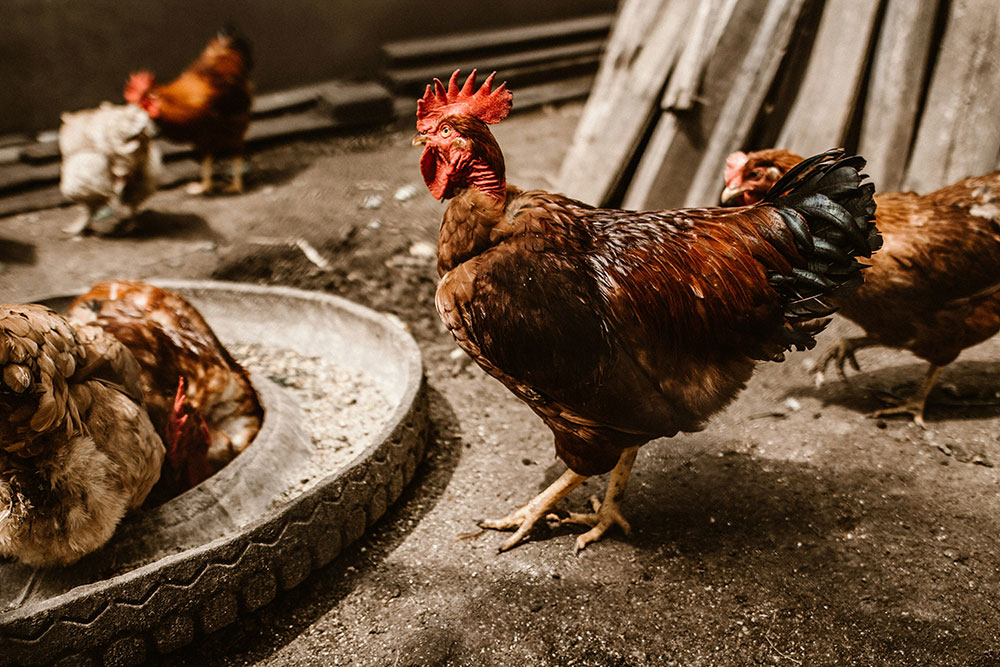
Introduction to Poultry Feed Export from India
India has emerged as a significant player in the global poultry feed market, underscored by a robust growth trajectory and escalating export activities. As an agricultural powerhouse, India’s poultry feed industry leverages a vast array of locally sourced raw materials, contributing to the creation of high-quality poultry feed. This industry has witnessed exponential growth due to advancements in feed technology and increasing investments, positioning India as a formidable exporter.
The global demand for poultry feed is driven primarily by the expansion of the poultry sector in developing and developed countries alike. With growing populations and rising protein consumption, the necessity for nutrient-rich poultry feed has never been more critical. Indian poultry feed companies have adeptly harnessed this opportunity. They are continually improving their production processes, ensuring that the feed meets international standards and quality benchmarks. This has substantially enhanced India’s reputation in the global marketplace.
Several factors contribute to India’s viability as a leading exporter of poultry feed. Foremost among these is the country’s ample supply of raw materials such as maize, sorghum, and soybeans, which are essential ingredients in poultry feed. Additionally, the relatively low cost of production compared to other countries allows Indian producers to offer competitive pricing while maintaining quality. Government initiatives and support, including favorable export policies and subsidies, have further bolstered the industry’s export capabilities.
For local producers, exporting poultry feed presents multiple benefits. It opens up new revenue streams, diversifies market risks, and fosters innovation. On a broader scale, the export boom in poultry feed enhances the national economy by contributing to foreign exchange earnings and generating employment opportunities within the agricultural and manufacturing sectors.
In essence, the interplay of high-quality production, competitive pricing, and supportive governmental policies has cemented India’s position as a pivotal player in the global poultry feed market. This dynamic enables Indian companies to successfully meet the growing international demand, making poultry feed export a lucrative venture both for individual producers and the country’s economy at large.
Regulations and Compliance for Poultry Feed Exports
Adhering to stringent regulations and compliance standards is crucial for the successful export of poultry feed from India. Various certifications and quality standards must be met to ensure the product aligns with both domestic and international guidelines. Exporters must familiarize themselves with these requirements to maintain the integrity and marketability of their poultry feed products.
Firstly, obtaining necessary certifications such as the Agmark certification from the Directorate of Marketing and Inspection (DMI) is essential. This certification guarantees that the poultry feed meets the specific quality parameters laid out for export. Additionally, exporters need to secure certifications from bodies like the Export Inspection Council (EIC) and Agricultural and Processed Food Products Export Development Authority (APEDA), ensuring compliance with both national and international standards.
Quality standards play a pivotal role in the export process. Exporters must ensure that their products are free from contaminants, adequately nutrient-balanced, and safe for consumption by poultry. Labeling guidelines are equally important. Correct labeling with clear details about the ingredients, nutritional information, and manufacturing and expiry dates are mandatory. Mislabeling can result in severe penalties and rejection of products at international borders.
The documentation process involves preparing various export-related documents such as the Commercial Invoice, Bill of Lading, Certificate of Origin, and Packing List. Efficient handling of these documents is necessary to ensure smooth customs clearance and to meet the import requirements of the destination country.
Regulatory bodies such as the Food Safety and Standards Authority of India (FSSAI) play an instrumental role in overseeing compliance with food safety and quality standards. Internationally, each country may have its own set of regulatory bodies and standards, which exporters must be aware of and adhere to. The United States Food and Drug Administration (FDA) and the European Food Safety Authority (EFSA) are examples of such regulatory entities.
For exporters looking to expedite the compliance process, understanding the role of these regulatory bodies and keeping abreast of evolving guidelines is paramount. Engaging in regular training and consultation with experts in the field can significantly enhance the likelihood of meeting all legal requirements and ensuring a smooth export process.
Challenges and Solutions in Poultry Feed Export
Exporting poultry feed from India presents several challenges that need to be effectively managed to ensure success in the global market. Logistical issues are often at the forefront, encompassing complexities such as transportation bottlenecks, customs clearance delays, and inadequate infrastructure at ports. Efficient management of these logistical hurdles is crucial. Exporters can leverage technology-driven logistics solutions that offer real-time tracking and streamlined communication channels with carriers and customs officials. Implementing an end-to-end supply chain management software can also help in mitigating risks and ensuring timely delivery.
Another significant challenge is the competition from other countries that have established a stronghold in the poultry feed market. Countries such as the United States and Brazil have a competitive edge due to their advanced farming techniques and economies of scale. Indian exporters need to emphasize the unique selling propositions (USPs) of their products, such as organic or non-GMO feeds, and focus on quality improvements. Certifications and adherence to international quality standards can also provide an edge over competitors.
Fluctuating market prices of raw materials such as corn and soybeans pose another challenge. These fluctuations can significantly impact production costs, making it difficult to maintain consistent pricing for international buyers. Exporters can navigate this by engaging in strategic procurement practices, including futures contracts and bulk buying during off-season periods to hedge against price volatility. Additionally, building strong, long-term relationships with suppliers can help in negotiating better terms and ensuring a more stable supply.
Building robust relationships with international buyers is indispensable for long-term success. This involves understanding the specific needs of the target market, providing exceptional customer service, and consistently meeting quality and delivery commitments. Expanding the network through participation in international trade fairs, exhibitions, and business delegations can also be highly beneficial. Case studies of successful exporters reveal that maintaining transparency, fulfilling contractual obligations, and demonstrating reliability are key factors that contribute to building trust and securing repeat business.
Emerging Trends and Future Prospects in Poultry Feed Export
The global poultry feed market is undergoing significant transformation, with India poised to leverage various emerging trends to bolster its export potential. One pivotal trend is the growing demand for sustainable and organic poultry feed. As consumers across the globe become increasingly aware of animal welfare and environmental impact, there is a marked shift towards feed that is free from synthetic additives and produced through eco-friendly methods. This demand opens up lucrative opportunities for Indian exporters to cater to markets that prioritize sustainability, particularly in Europe and North America.
Innovations in feed formulations are another trend shaping the future of poultry feed export. Technological advancements have enabled the development of specialized feeds that enhance poultry health, improve nutrient absorption, and bolster productivity. Enriched with probiotics, enzymes, and other beneficial additives, these advanced feed formulations not only meet the nutritional requirements of poultry but also respond to the growing industry emphasis on animal health and performance. Exporters who invest in R&D to innovate their feed products can gain a competitive edge in the international market.
Furthermore, advancements in supply chain management are critical for the optimization of poultry feed export. Modern logistics solutions, including smart warehousing and blockchain technology, ensure traceability, reduce wastage, and streamline the distribution process. Effective supply chain management is essential for maintaining the quality and consistency of feed during transit, thus enhancing customer satisfaction and bolstering India’s reputation as a reliable exporter.
In the context of potential markets for expansion, examining geopolitical factors and trade agreements reveals promising opportunities. Regions such as the Middle East and Africa are witnessing rapid growth in their poultry sectors, driving demand for quality feed. Strategic trade agreements and diplomatic relations can facilitate access to these burgeoning markets, further augmenting India’s export footprint.
As the poultry feed industry continues to evolve, staying ahead of these trends will be crucial. By focusing on sustainability, innovating feed formulations, and enhancing supply chain efficiency, Indian poultry feed exporters can capitalize on burgeoning opportunities, ensuring robust growth in the global market.



